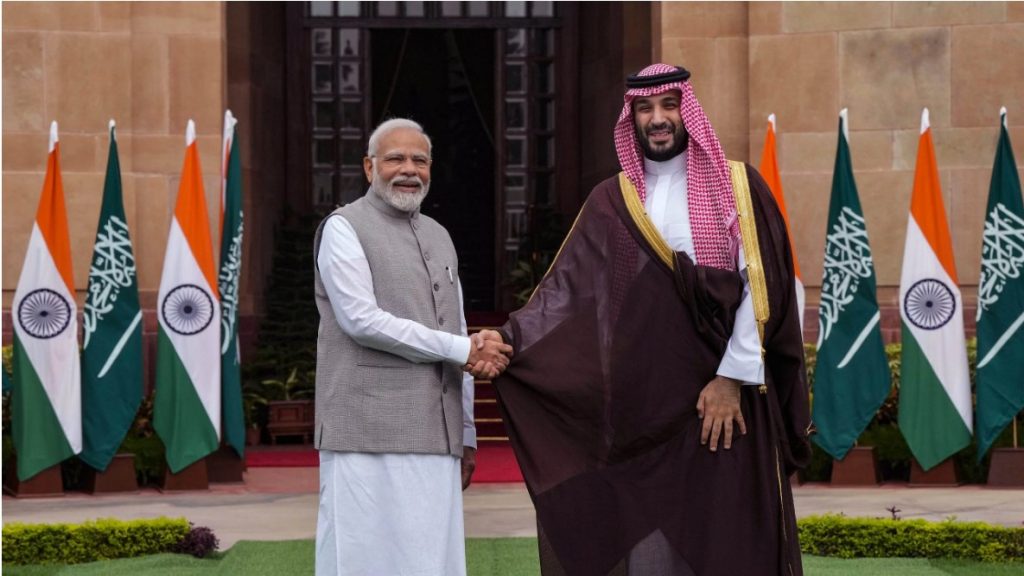Foreign affairs experts have hailed the announcement of an India-Middle East-Europe Economic Corridor (IMEC) to transport goods from India to Europe through the UAE, Saudi Arabia, Jordan and Israel. These experts see IMEC as an alternative to China’s Belt and Road Initiative that has built so much infrastructure in Asia and Africa. They also think it will cement relations between India and the Arab nations.
The first leg of the route will be by ship from Mumbai to Jebel Ali, UAE. The next leg by rail from Jebel Ali through Saudi Arabia and Jordan to Haifa port in Israel. The third leg will be by sea from Haifa to Piraeus in Greece, a gateway to the European Union.
However, the announcement says nothing about the project costs or transport costs. It gives no estimate of the freight cost of delivering a container from Mumbai to Piraeus. As an economist, I must express fears about the project. It may make excellent political sense, but it goes against all the tenets of transport economics.
Foreign affairs experts love international corridors, which conjure up geopolitical visions of grandeur. But in the real world, geopolitical projects are best abandoned unless they are proven to be economically viable
Freight already goes by ship today from Mumbai to Greece via the Suez Canal. That is a proven, cost-efficient form of transport. The IMEC must compete with the Suez Canal. That will be very difficult. In any case, to the extent IMEC improves our relations with the UAE and Saudi Arabia, it will hurt relations with Egypt.
Elementary transport economics shows that transport by sea is much cheaper than by land. A ship floats and so has effective zero weight on a sea voyage. But a railway train or truck weighs many tonnes, creating considerable friction that increases energy use and costs. The Suez Canal made sea transport from Europe to India and the Far East much cheaper than the traditional overland silk routes.
Even if a sea voyage is much longer than a rail voyage, it is often cheaper. Goods move from the east to the west coast of the US through the Panama Canal, a long distance, and yet this competes with much shorter rail freight even after paying hefty canal fees.
If the cargo is unloaded and loaded again, transport costs go up substantially. And IMEC requires loading at Mumbai, unloading and loading again at two points en route, and final unloading at Piraeus.
In India, Odisha is now the principal coal-mining state, sending coal to western and southern power stations. This once went by rail. But coal has for years been sent by sea from Paradip port to Andhra Pradesh and Tamil Nadu because that is much cheaper. Now, coal is being sent by sea right round Kanyakumari all the way to ports in Karnataka, Maharashtra and Gujarat.
The government’s draft coal logistics policy says the cost of shipping from Paradip, Odisha, to Dahej, Gujarat, is just ₹256/tonne. Adding loading and unloading costs of ₹560, that comes to just ₹816/tonne ($10), less than half rail freight.
It is not even clear that IMEC will be shorter than the Suez Canal route. A look at the map may suggest that IMEC should be somewhat shorter. But a railway line cannot go as the crow flies across deserts and mountains. The proposed route must cross mountainous terrain in Saudi Arabia and Jordan, plunge down into the Jordan River, much of which lies below sea level, and climb up again on the Israeli side.
A rail line through mountainous terrain requires significant zigzagging and detouring that substantially increases journey length. The alternative is tunnelling, which is very expensive and will probably ruin viability. Building tracks across a desert is also very expensive: Securing rails over sandy soil requires complex, costly engineering.
Containers can be moved from ships to rail wagons and back to ships again. High-value goods typically move by containers. But bulk cargo — such as agricultural goods and ore — cannot be transported by containers. Bulk freight will still have to go by sea between India and Europe even if IMEC becomes a reality.
What about higher value goods? Transport costs fall dramatically when a consignment is sent from point to point, either by sea or rail. But if the cargo is unloaded and loaded again, costs go up substantially. Besides, time is lost in unloading a ship and reloading the cargo onto rail wagons. On top of that insurance costs go up because of risks of cargo damage during trans-shipment and pilferage along the route.
IMEC requires loading at Mumbai, unloading and loading again at Jebel Ali, loading and unloading again at Haifa, and final unloading at Piraeus. That does not sound like sensible transport economics.
Most of China’s Belt and Road projects have fared well, but some have run into serious problems, including the China-Pakistan Economic Corridor. Foreign affairs experts love international corridors, which conjure up geopolitical visions of grandeur. But in the real world, geopolitical projects are best abandoned unless they are proven to be economically viable.
This article was originally published by The Times of India on September 23, 2023.


